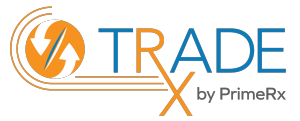For independent community pharmacies, determining how and why they have received a rebate from a drug supplier can be as daunting as trying to solve a Rubik’s Cube puzzle for the first time.
Where independent pharmacies stand
To better grasp why the system is so puzzling, it may help to look at some of the market forces at work. This chart shows the percentage of retail revenue earned by different pharmacy channels in 2013.
|
% of Retail Prescription Revenue |
2012 |
2013 |
|
Chain Pharmacies |
50.5 |
51.3 |
|
Mail Pharmacies |
20.2 |
21.3 |
|
Independent Pharmacies |
16 |
14.7 |
|
Mass Merchants w/Pharmacies |
8.4 |
8.2 |
|
Supermarkets w/Pharmacies |
5.2 |
4.1 |
(source: Drug Channels Institute)
Suppliers have had control
Unlike all other channels listed above (which purchase at least some of their pharmaceuticals directly from manufacturers), independent pharmacies buy nearly all of their drugs from suppliers.
The independent pharmacy’s relatively small buying power combined with their need to purchase from suppliers puts the suppliers in a commanding position. The result is that there is no “normal” in the realm of supplier rebates:
- Some suppliers offer rebates; some do not
- Rebates are not paid by the supplier until manufacturer charge backs are cleared
- Rebates may be offered monthly or quarterly
- Clear description of a rebate is not readily available
Pharmacies that want to find out exactly why they have (or have not) received rebates can put a lot of time into it before they gain an understanding. However, that understanding may or may not be predictive of future rebates.
Whether or not the rebate system is deliberately confusing, it does serve to keep independent pharmacies attached to their suppliers. In fact, one of the major objections we hear from pharmacies that resist joining TRxADE and taking advantage of our online marketplace is that the pharmacy isn’t sure of a drug’s cost until they see their rebate.
And there’s the rub, how can you compare prices accurately when you don’t know how much something will really cost you? For that answer, we asked our members.
What our members tell us
Now with more than 2,000 members and tens of thousands of transactions under our belts, we asked some of our most active members how they compare the prices they find on TRxADE with those of suppliers they buy from directly. Here’s what we found.
Experienced members buy via TRxADE when the online price is at least 5-6% below the price offered by their primary supplier. They have found that using this rule of thumb produces net savings substantial enough to warrant comparison shopping (and purchasing) on TRxADE.
If you use a different savings percentage as a rule of thumb for purchasing on TRxADE, please tell us in the comments. We want to hear from you.
Comparing prices used to take a good bit of time, but now we’ve made it easier than ever for you to compare your other suppliers’ prices with those on the TRxADE marketplace.
Comparison shop up to 50 items at once
As I told you last week, you can now compare prices of up to 50 items at once on TRxADE, and order the ones that save you money. Here’s how:
- Login to TRxADE.
- Hover over “Purchase Products” and click “ Orders.”
- Click the “NDC/UPC Entry” to enter NDC codes manually or to scan UPC codes of the items you want to compare
- Or, click the “Choose File” button to upload an Excel spreadsheet with up to 50 items on it (including the price your supplier is asking)
- If you need help learning to use this quick and powerful new search tool, contact the Membership Assistance Team at 800-261-0281. You’ll be an expert in no time.
When the results show a savings of 5-6% or more, make the purchase on TRxADE and don’t worry about a rebate that you might or might not get from your supplier.
This is how you take control of your pharmacy back. Puzzle solved.
